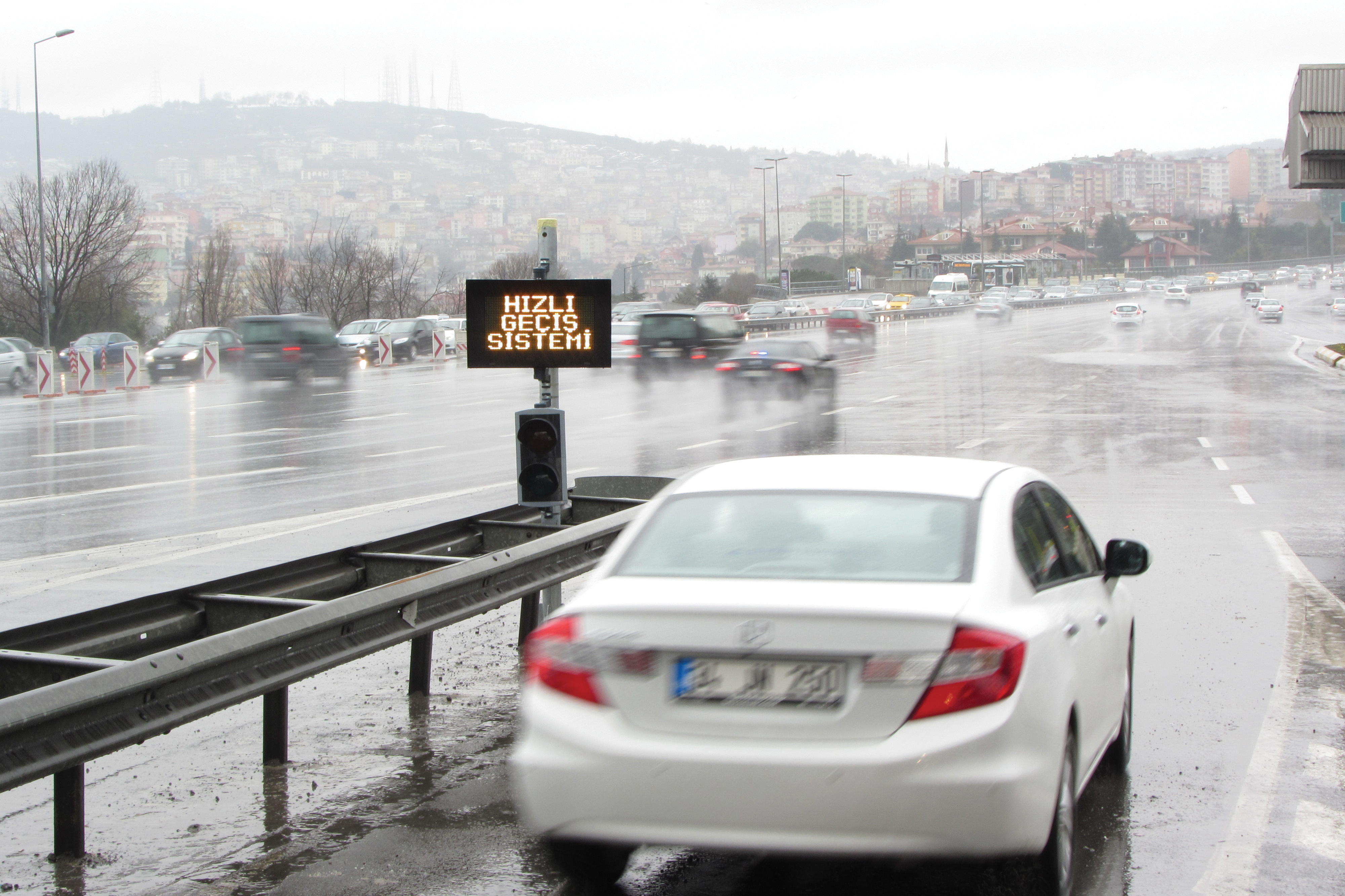
A programme modernising road tolling equipment on Turkey’s national highway network has resulted in what is arguably Europe’s most advanced toll system, reports Jon Masters.
Turkey has introduced a new system of technology for charging for use of its 2000km national highway network, heralded as the first full-scale use of passive RFID tags for electronic open road tolling in Europe. The new ‘Fast Passing System’ (HGS) is an upgrade of Turkey’s existing Automatic Passing System (OGS) technology, which uses active RFID boxes in vehicles. OGS is being gradually phased out as vehicle owners in Turkey sign up to the new system and fit the thinner windscreen mounted HGS tags.Significantly, the project client, Turkey’s PTT (mail, telephone telegraph) authority, has opted to install a system based on the ISO 18000 6C standard, eschewing the European CEN alternative. This may seem surprising for an associate member of the
“Interoperability with Europe is seen as very important in Turkey. It is wrong to say otherwise. In time, if the authorities want to shift to an EU standard we can easily do that, but it’s not seen as crucial at present. Interoperability and adoption of the EU standard was considered, but for the time being, 6C is adequate,” says
Vendeka IT, part of the Vendeka group, is the Turkish technology specialist that has designed and built the new HGS tolling system and is now operating it in use for client PTT.
Turkey has been gradually modernising its national tolling system. In December 2012 the country removed the last of its KGS (card passing system) proximity card technology, following launch of the new HGS system in September last year. All 94 of Turkey’s highway entry and exit and bridge toll plazas are now equipped with HGS tag readers, but not at all plaza lanes.
Congestion busting
For now, drivers still have the option of using an OGS toll lane, but the new system is expected to replace OGS at all lanes by the end of this year. There is estimated to be 15 million vehicles in Turkey. Around four million have so far signed up to HGS.Incentive for drivers to register to the new HGS is presenting itself in the form of toll gates free of traffic queues. According to Ozdemir, the new technology allows vehicles to pass without stopping, which is a principal benefit and reason for Turkey’s latest toll system upgrade. While OGS presented an advance on KGS and its proximity cards, HGS is claimed to be significantly better still for a number of reasons.
Congestion at toll plazas should reduce significantly once OGS has been completely phased out. Price has been another important factor. “The former system was expensive in operation for the Government and for drivers,” Ozdemir says. “The OGS in-vehicle boxes cost 60 to 70 Turkish Lira, whereas the HGS tags cost in the region of five Lira. There is no longer any battery required, as in the OGS boxes and the new tags are more reliable and more easily fitted.”
Robust infrastructure
The upgrade to HGS presents a number of other advantages associated with modernisation, not least its integration with a new electronic back office payment system, underpinned by robust infrastructure for vehicle checking and enforcement.HGS toll lanes at highway entry and exit plazas are equipped with magnetic loops for vehicle detection and licence plate recognition cameras to back up the RFID tag readers. A registered vehicle’s account number is taken by the tag reader and the data distributed to all possible exit plazas.
Once the same vehicle is detected at an exit lane, the magnetic loops and a system of vehicle classification instantaneously cross-check the data against that in the HGS registry. The exit data is matched to the entry data, combined with the classification information and the user’s account is then charged immediately as per the vehicle type and distance travelled between gates.
“If the RFID tag cannot be read or the reader does not pick up a reading then the image picked up by licence plate recognition cameras is used for enforcement,” says Ozdemir. “This data is not transmitted in real-time as enforcement is not the most important thing here. The plate image is deleted as soon as the vehicle exits the system if there is no problem and payment is collected okay. If a vehicle passes a gate and is not registered to the system they still have a period of one week in which to pay before any penalty is applied.”
Back office
Turkey’s HGS system makes use of Sybase database management software for real-time calculation and transmission of vehicle and payment data. The 6C tags are read byThe back office system is Vendeka’s own, operating at toll plazas, seven regional computer centres and one central data hub, all communicating via fibre-optic cable and satellite communication. The back office system architecture also includes violation evaluation and bank integrations layers and a separate violation processing centre (see side bar).
According to Ozdemir, the modular nature of Vendeka’s back office system makes it suitable for integration with other types of toll collection or payment services. None have been integrated with HGS yet, but negotiations are under way with the Istanbul City Municipality over possible inclusion of the city’s car parks within the HGS system. Similarly, the HGS authorities are working on an agreement with the Istanbul Seabus operator for joint payment operations.
Furthermore, a more sensitive application being developed concerns Turkey’s police and security services. The robustness of the HGS system and its ability to detect known registered and non-registered users makes it potentially very reliable for tracking and tracing stolen vehicles or those suspected of being involved in criminal activity. “If needed for security reasons, the gates can very effectively detect and report the location of a suspected vehicle if its details are flagged up in the system,” Ozdemir says.
Scalable and modular: Vendeka back office
The Vendeka HGS back office system is web based and multi-lingual and claimed to be scalable for operating in exceptionally high traffic and revenue volume environments. It principally manages electronic transactions between toll tag readers and payment and violation management systems.
According to Vendeka, it uses data financial clearing house concepts to allow it to be used for all manner of toll collection projects. As a modular system, it offers a wide array of options for modules such as price plan management, rating, configuration, lane and plaza server (view real-time lane events), violation enforcement (fraud management), report generation, bank interface and settlement, system monitoring and inventory, incident management, advanced security options and interoperability (between toll authorities and other revenue collecting authorities).












